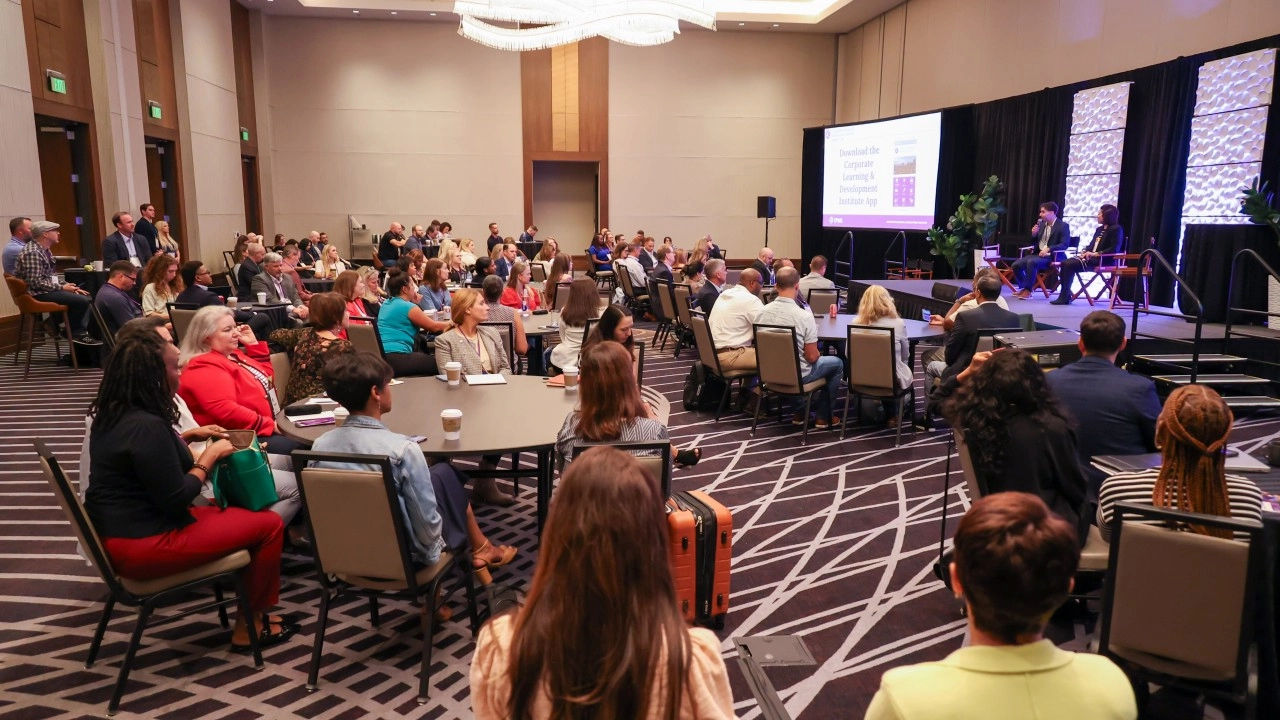

What L&D Leaders Are Solving Right Now
TL;DR: CLDI made one thing obvious: impact happens when we pair CFO-grade ROI with ROE, design for the other 98% of real work, and ship next-day-usable manager behaviours: delivered in short, social, and brain-friendly ways.
Stepping off the front lines at the Corporate Learning & Development Institute (CLDI) last week, I came back to Toronto with the same energy I felt at my first HR Management Institute, only sharper and more aligned to my background.
Hosting an event of this calibre (rather than attending) changes your vantage point: you hear the hallway hypotheses, see the on-stage frameworks land, and watch who’s still debating at the reception an hour later. Here’s what stood out for me, and what I think matters for every L&D leader heading into Q4.
The CLDI Atmosphere: Small-Room Candour, Big-Room Problems IPMI’s format keeps things intimate with intent, so the hard questions surface early:
“What will we actually measure?”
“How do we get managers to do the behaviours, not just know them?”
“How do we design for brains under pressure?”
“…and what’s the smart way to use AI?”
The conversations were refreshingly operator-level and outcome-obsessed.
Wix’s L&D head pushed a simple, challenging idea: your function is a business line. Know your costs, tie first-party learning data to second-party business data, and communicate impact through real storytelling (A/B tests, ROI vs. ROE, stakeholder-grade visuals).
Lead with a CFO-grade ROI story (costs, benefits, a quick A/B to isolate effect) to earn the right to invest. Then pair it with ROE—return on expectations—so stakeholders see non-financial wins: manager confidence, time-to-competence, adoption in the flow of work.
In practice:
Hemsley Fraser framed the “ROI Paradox”: we chase metrics without the engagement architecture to reach them. Design adoption like a product launch—awareness, line-manager cascades, success stories, simple on-the-job actions—so you hit a cultural tipping point.
Managers are stretched. Programmes that stick are layered, human-centred, and skills-first—with toolkits people can use in their 1:1s tomorrow morning. I’ve seen the difference great 1:1s make: human before role. If it isn’t behaviour-ready, it isn’t ready.
When problems are complex, the old playbook—fix (tell/solve) or force (escalate/mandate)—creates compliance without commitment. Cylient’s Untying the Knot reframed it for me: most “stuck” moments are Do Knot See / Do Knot Want / Do Knot Know. The move is to spark insight so people see differently, want genuinely, and know concretely what to try next.
Cloverleaf’s math was sobering: in a knowledge worker’s year, L&D-touch moments are ~1–3% of total interactions. The opportunity is to embed learning in the other 97–99%—tools, rituals, and feedback loops—so capability grows where work actually happens.
What clicked for me: once you stop fighting for attention you don’t have, you can place nudges where behaviour already lives. I’m adding two-question coaching prompts to recurring team meetings, pinning 60-second “how we do X here” clips in the relevant Teams channels, and baking micro-checklists into the tool at the moment of work (Deal Desk form, Jira template, performance 1:1 doc). When line managers echo the same cue in their cascades—and we measure participation in those everyday touchpoints—adoption jumps, because we designed for the other 98.5% of the work week, not against it.
For Gen Z and younger millennials, UX is table stakes: short hooks, visible progress, peer proof, and authentic voices beat over-produced polish. I now package anything important with a visible TL;DR and a three-second hook, then break the rest into skimmable chunks so people choose to go deeper. I’m also seeding credibility with peer voices (unscripted “how I used this” clips) and internal influencers—ERG leads, award winners, trusted managers—to carry the message where my team can’t. Dial down polish, dial up human; real stories (including what didn’t work) travel farther than canned quotes.
“Brain-friendly” design isn’t fluff—it’s architecture. The spacing effect and a micro-burst + restoration cadence offer a simple rule: teach in short bursts, then create deliberate recovery so memory can consolidate (e.g., 8–12 minutes of learning, 2–3 minutes of reflection or movement). Pair that with trust cues—peer voices, manager co-facilitation, small wins—so the brain is willing to engage under uncertainty. I’m sequencing rollouts as: hook → micro-skill → quick practice → restore → spaced follow-up in the flow of work, plus social-proof pods so credibility spreads laterally, not just top-down. Adoption improves when you design for attention, spacing, and trust on purpose—rather than fighting distraction with longer decks.
One of the most practical sessions wasn’t about prompts—it was about presence. Leaders can use GenAI to scaffold reflection, plan small authenticity experiments, and improve trust-building communications. The key: don’t outsource your voice; use AI to surface it.
Hosting compresses learning. You see which slides make executives grab their phones, which frameworks get cited later, and which phrases show up at breakfast the next day. The big signal: everyone is moving from courses delivered to capability created—and they’re willing to re-architect programmes, comms, and metrics to get there.
To contribute to the next iteration of the Corporate Learning & Development Institute as an Advisory Committee Member or as part of the 2026 Speaker Faculty, please contact Josh Farrell at jfarrell@ipmievents.com.